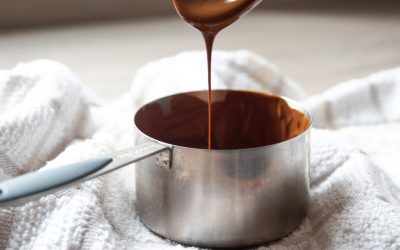What is it?
Technically any fat that is solid at room temperature is classed as shortening. This is because a fat such as butter or lard coats the strands of gluten in flour. Stopping them from stretching and becoming elastic. Joining and stretching of the gluten strands would normally be what you are looking for in a bread dough. This is why bread needs to be kneaded. With no fat to coat the strands of gluten and stop them sticking and forming long elastic chains the end result is a tough and elastic dough perfect for bread.
On the other hand, a shortbread biscuit has “shortening” (in this case, butter). This is added to the recipe to stop this from happening. Which is why shortbread is crumbly and easy to break.
The specially made shortening that we are talking about though is slightly different. It is one of those things that pops up from time to time in baking recipes. It isn’t however an ingredient that you tend to find in the supermarket.
It tends to be a vegetable oil that has gone through hydrogenation, turning it solid like butter and a bright white colour. It’s usually made from soybean, cottonseed, or palm oils. You can normally buy baking sticks of shortening and use it the same as other fats. The difference however, is that unlike butter, shortening won’t add any flavour to your bakes and cakes. This is because it has a neutral taste.
What do you use it for?
The most common use of shortening is to bake pie crusts. Unlike butter it won’t melt when you handle, roll and shape the dough. This makes the pie crust easier to work with.
It is also great for things that need to stay out for a long time in warm conditions like dessert tables, wedding cakes or displays.
It also influences the texture of cakes and most baked goods, giving a more soft and crumbly texture. You do however sacrifice the flavour that you would get with butter. So it’s not time to change around all your recipes just yet.Shortening is a good choice if you are looking for stability and products that will withstand a slightly harsher conditions.
To sign up to The Online Pastry School and get a 30 day FREE trial click here
To find out more about shortening click here


